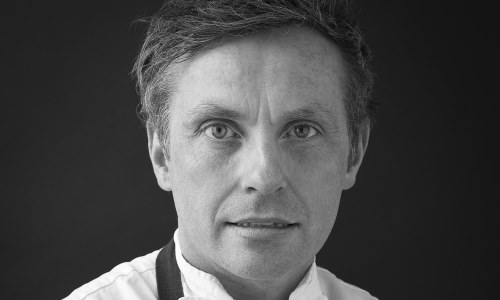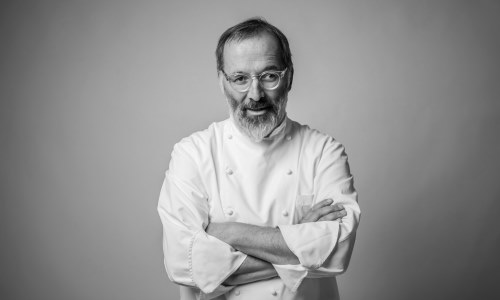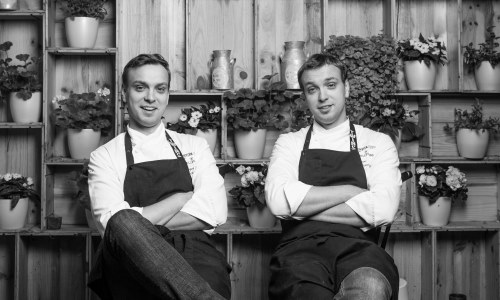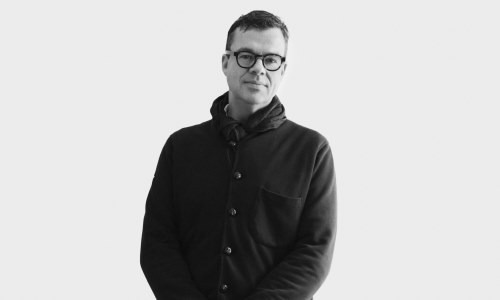Top Chefs Share Their Best Knife Tips
Take five top chefs, a pot of Michelin stars and the freshest, finest produce from across the globe. In other words, the perfect ingredients for a truly mind blowing culinary masterpiece. Well, almost. Because when it comes to bringing that all important ‘je ne sais quoi’ to the table, there is one further element that no chef worth his (or her) salt would be without: the right knife.
Here we talk to some of the leading chefs in the industry: Adam Simmonds, Norbert Niederkofler, Sergey and Ivan Berezutskiy and Jeremy Lee to find out exactly what they look for in a knife and how they ensure they get the best out of their blades.
Meet the chefs
Adam Simmonds

Restaurant Bio: The Test Kitchen, Danesfield House, Ynyshir Hall, Le Manoir aux Quat’ Saisons.
- Currently pioneering The Test Kitchen in Soho, a pop-up restaurant where diners’ feedback is helping shape the ultimate menu for his permanent restaurant, which is due to open in 2018.
- Adam has received two Michelin stars and has been named as one of the decade’s ‘Chefs to Watch’ according to the Good Food Guide.
- Whilst appearing on the Great British Menu, Adam’s D-Day inspired dish went on to win a place in the Veteran’s banquet, one of the highlights of his career.
Norbert Niederkofler

Restaurant Bio: St Hubertus (formerly Hotel Rosa Alpina in San Cassiano).
- Niederkofler runs the two Michelin-starred St Hubertus in South Tyrol, one of Europe’s most competitive culinary hotspots.
- He is famous for his ‘Cook the Mountain’ philosophy, using ingredients produced purely within the Dolomites.
- Norbert’s two goals in life were to see the world and to be a chef. With training that took him from Bolzano to Germany, Switzerland, America, Austria and then back to Italy via another stop in Germany, where he trained under legendary chefs Jörg Müller and Eckart Witzigmann, he certainly achieved both goals.
Sergey & Ivan Berezutskiy

Restaurant Bio: Twins, Varvary Restaurant (Moscow), Alinea (Chicago), El Bulli, El Celler de Can Roca (Spain).
- Identical twin chefs reinterpret traditional Russian cuisine in their joint collaboration, Twins.
- Sergey (with Ivan’s help) won the San Pellegrino Young Chef of the Year award in 2014, sealing the deal that the brothers would join forces to open a restaurant.
- Twins has been ranked in the Diners Club World’s 50 Best Restaurants Academy.
Jeremy Lee

Restaurant Bio: Quo Vadis, Blueprint Café, Frith Street Restaurant and Euphorium.
- Head chef at iconic Soho establishment Quo Vadis since 2012.
- Jeremy’s signature dish is his smoked eel sandwich consisting of smoked eel, horseradish, fried bread and pickled onions.
- He has appeared on the Great British Menu and was shortlisted for a Glenfiddich food writing award for his work with The Guardian.
We asked the chefs:
What type of knives are you currently using?
Adam Simmonds: I am currently using Japanese knives, from the Japanese knife company, I prefer these knives as they have good balance and weight.
Norbert Niederkofler: For general use I use Global knives. They are very simple to handle and the brand has some very good knives for working fish. It also has complete ranges with special edges for different cuts. For personal use I use handmade Japanese knives. These are pieces of art and the edge made for the left-hander is also very important for me.
Sergey and Ivan Berezutskiy: Knives are essentially the extension of a chef and the instrument which we use most often in the kitchen. The best knives we work with are Nesmuk.
Jeremy Lee: I have to confess to visiting a very beautiful knife shop next door to Boccondivino in Bra where the Slow Food Movement was first mooted. There they have the most staggering array of knives. Of every possible style. The small independent businesses may cost a bit more than the high street but the care, talk and confidence given by good instruction and care is priceless.
What materials do you look for in a knife?
Sergey and Ivan Berezutskiy: We personally prefer wooden handles but in general it doesn't matter which knife you have as long as it is a professional knife and you look after it well. We can deliberate for a long time about steel and best materials, but even a knife made from the best steel will not be in its prime condition for long if you don't love it and look after it.
How do you maintain your knives?
Adam Simmonds: I use a wet stone once a week, and I sharpen them on a steel before every use.
Norbert Niederkofler: I sharpen the Japanese knives with a stone every time I use them.
Do you have any advice for other professional chefs on what to look for in a knife?
Adam Simmonds: For me the weight of the knife is massively important, it needs to be equally balanced, so that you can get the perfect feel for the knife.
Norbert Niederkofler: Global has bags for its knives, so for us who are doing lots of catering and events, the bag is very important, especially for traveling.
Sergey and Ivan Berezutskiy: An ordinary professional knife, even if it’s not that expensive, will be a worthwhile instrument as long as you pay enough attention to it.
Jeremy Lee: Knives are most personal and each should find their own way. Buy one good knife at a time as they last well. It is a riotous cost…a well-filled knife wallet. But such a pleasure. It is a joy watching chefs whizz through their preparations with a finely honed blade. A good knife is a good thing. A blunt knife is not.
8 September 2017





